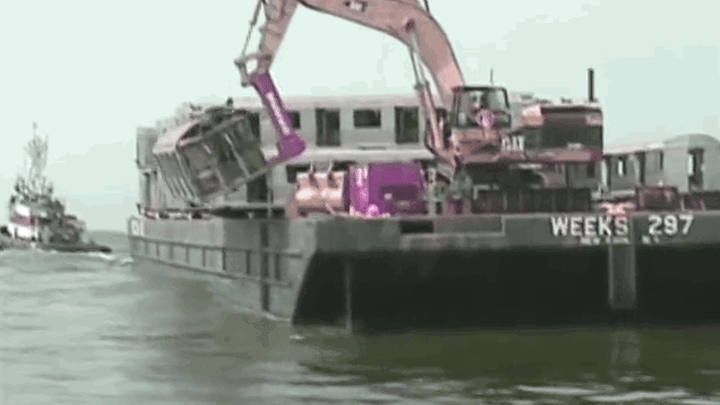What Ever Happened to All Those Subway Cars We Dumped into the Atlantic?

Most of what humans put in the oceans is pretty rotten, from the tons of plastic floating in the world’s gyres—which can end up in the fish we eat—to untreated sewage dumped every time it rains.
But drowning decommissioned NYC subway cars in the Atlantic Ocean throughout the 2000s? Well, it was—maybe—beneficial.
The idea goes like this: By stripping the cars, cleaning them, and then tossing them off barges into the waters off the shores of New Jersey, Delaware, Virginia, the Carolinas, and Georgia, we could create fish habitats along the sandy-bottomed coastal shelf that runs from New York to Cape Hatteras.
Most of that shelf is devoid of rock outcrops around which fish communities typically form; after corals and plants attach to them, oysters, mussels, and other invertebrates usually follow, which in turn attract fish. Here the subway cars take the place of rock as a rich environment full of nooks and crannies where an ocean community can grow.
"Oftentimes [artificial reefs] are hundreds of times richer in terms of biomass than the natural community at the bottom," Jeff Tinsman, the artificial reef coordinator for the Delaware Department of Natural Resources, told National Geographic back in 2006. "This is very attractive to fish."
And according to studies on artificial vs. natural reef systems, both seem to harbor similar numbers and diversity of animals.
As you can see in the video below (skip to 4:12 to get to the subway-car reefs), there are fish galore in what looks like an IRT carriage-shaped reef.
Simon Thorrold, a scientist in the biology department at Woods Hole Oceanographic Institute, told mental_floss, “There is no doubt that if you put subway cars into areas with little hard structure, they will attract invertebrates, and then they will attract fish.”
But it’s hard to know whether that additional habitat is increasing fish populations or just moving them around, “The question is: Are you increasing productivity? Or just aggregating fish that are [already] there?" Thorrold says. "If it's the latter, you just make the fish easier to catch. Which is not necessarily bad, but you can't claim that the reef is adding fish."
So while fishermen and divers may love these sites (and they certainly look fun to explore), they may not be fostering higher numbers of fish or other animals. And the cars are breaking down faster than originally thought—certainly faster than bedrock where natural reefs tend to form.
“It's good for fishermen and it's good for divers. Whether it's good for the ocean is up in air,” Thorrold says.
For now, it appears that we’ve finally dumped something into the oceans that doesn’t seem to be hurting them.